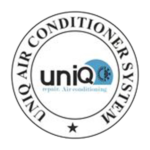AC Thermostat Calibration: Maintaining Comfort and Efficiency
AC Thermostat Calibration The thermostat is the brain of your home’s air conditioning (AC) system. It is responsible for regulating temperature, ensuring comfort, and optimizing energy efficiency. However, over time, thermostats can become less accurate, leading to temperature inconsistencies, increased energy bills, and reduced overall comfort. Calibration is the process of adjusting the thermostat to ensure that it accurately reflects the desired temperature. In this comprehensive guide, we will explore the importance of AC thermostat calibration, signs that your thermostat may need calibration, the calibration process, and tips for maintaining an accurately calibrated thermostat.
Chapter 1: The Role of the AC Thermostat
1.1 Understanding Thermostats
The thermostat is a small yet critical component of your AC system. It serves several essential functions:
- Temperature Control: The primary role of the thermostat is to regulate the indoor temperature by signaling the AC system to turn on or off as needed.
- Energy Efficiency: A well-calibrated thermostat helps ensure that your AC system operates efficiently, minimizing energy consumption and reducing utility bills.
- Comfort: Accurate temperature control provided by the thermostat ensures that your living spaces remain comfortable, regardless of outdoor conditions.
1.2 Types of Thermostats
There are various types of thermostats available, including:
- Manual Thermostats: These require manual adjustment and are typically found in older homes.
- Programmable Thermostats: These allow you to set temperature schedules to match your daily routines and save on energy costs.
- Smart Thermostats: These advanced devices can be controlled remotely via smartphones, learn your preferences, and adapt to your lifestyle.
Chapter 2: Signs That Your AC Thermostat Needs Calibration
It’s essential to recognize the signs that indicate your thermostat may need calibration. Common indicators include:
2.1 Temperature Inconsistencies
If your home’s temperature frequently varies from the set temperature on the thermostat, it may be a sign of calibration issues.
2.2 Frequent Cycling
An incorrectly calibrated thermostat may cause your AC system to turn on and off too frequently, which can lead to increased wear and higher energy bills.
2.3 Uneven Cooling
Inaccurate temperature readings can result in uneven cooling, with some areas of your home feeling too warm while others are too cold.
2.4 Increased Energy Bills
If your energy bills have increased without a corresponding increase in usage, it may be due to an inaccurately calibrated thermostat.
2.5 Delayed Response
A thermostat that doesn’t respond promptly when you adjust the temperature setting can be an indication of calibration issues.
Chapter 3: AC Thermostat Calibration Process
Calibrating your AC thermostat is a task that can often be performed by homeowners. Here are the general steps involved in the calibration process:
3.1 Gather Tools and Documentation
Before you begin, gather the following tools and documentation:
- A small screwdriver (for adjusting the thermostat)
- The thermostat’s user manual (for specific instructions)
- A thermometer (to check accuracy)
3.2 Turn Off the AC
Switch off the AC system to prevent it from turning on while you calibrate the thermostat.
3.3 Remove the Thermostat Cover
Carefully remove the cover of your thermostat to access the temperature adjustment controls.
3.4 Locate the Calibration Dial
Inside the thermostat, you will find a calibration dial or setting. This dial allows you to adjust the thermostat’s temperature reading.
3.5 Use a Thermometer
Place a thermometer close to the thermostat to measure the room’s actual temperature. Leave it in place for about 15 minutes to ensure an accurate reading.
3.6 Adjust the Calibration Dial
Compare the temperature reading on the thermostat to the reading on the thermometer. If there is a discrepancy, adjust the calibration dial accordingly. For example, if the thermostat reads 72°F, but the thermometer shows 74°F, you may need to increase the calibration by +2°F.
3.7 Repeat and Test
After making adjustments, replace the thermostat cover and wait for the AC system to cycle on. Monitor the temperature to see if it matches the desired setting more closely. Repeat the calibration process if necessary.
3.8 Monitor Over Time
Continue to monitor your thermostat’s accuracy over a few days to ensure it consistently maintains the desired temperature.
Chapter 4: Tips for Maintaining a Calibrated Thermostat
To keep your thermostat accurately calibrated and functioning optimally, consider the following maintenance tips:
4.1 Clean and Dust
Regularly clean and dust your thermostat to prevent debris buildup, which can affect temperature accuracy.
4.2 Check for Drafts
Ensure that the thermostat is not exposed to drafts, direct sunlight, or heat sources, as these can cause false temperature readings.
4.3 Change Batteries
If your thermostat uses batteries, replace them annually to prevent power issues that can affect calibration.
4.4 Schedule Professional Maintenance
Include thermostat calibration as part of your annual HVAC maintenance service to ensure accurate temperature control.
4.5 Upgrade to a Smart Thermostat
Consider upgrading to a smart thermostat, which can self-calibrate and adapt to your preferences, offering precise control and energy savings.
Chapter 5: Conclusion
A calibrated thermostat is essential for maintaining comfort and energy efficiency in your home. Regularly checking and adjusting your thermostat’s calibration can help you avoid temperature inconsistencies, high energy bills, and unnecessary wear on your AC system. By following the calibration process and implementing maintenance practices, you can ensure that your thermostat accurately reflects your desired indoor temperature, providing you with the comfort and efficiency you expect from your air conditioning system.


 Please enter your name and phone number below, We will get back to you soon.
Please enter your name and phone number below, We will get back to you soon.